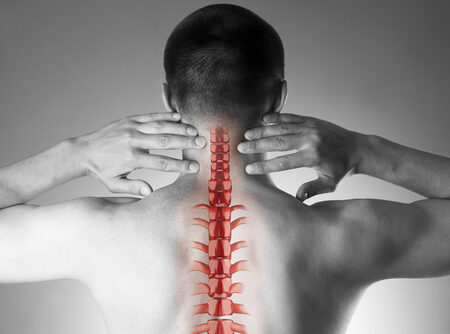 Scoliosis is a complex spinal condition characterized by an abnormal curvature of the spine. This condition affects people of all ages, and understanding the different types of scoliosis is essential for accurate diagnosis and treatment. In this blog post, we will explore the various types of scoliosis and their key differences, providing valuable insights into this common spinal condition.
Scoliosis is a complex spinal condition characterized by an abnormal curvature of the spine. This condition affects people of all ages, and understanding the different types of scoliosis is essential for accurate diagnosis and treatment. In this blog post, we will explore the various types of scoliosis and their key differences, providing valuable insights into this common spinal condition.
1. Idiopathic Scoliosis:
Idiopathic scoliosis is the most common type, accounting for approximately 80% of all scoliosis cases. This type of scoliosis has no identifiable cause and typically develops in children during their growth spurts. Idiopathic scoliosis is further classified into three subtypes based on age:
Infantile Idiopathic Scoliosis: Occurs in children under the age of three.
Juvenile Idiopathic Scoliosis: Develops between the ages of 3 and 10.
Adolescent Idiopathic Scoliosis: Appears during adolescent growth spurts, typically between the ages of 10 and 18.
2. Congenital Scoliosis:
Congenital scoliosis occurs due to an abnormality in the formation of the spinal bones during fetal development. This type of scoliosis is present at birth and may worsen as the child grows. The severity and location of the curvature can vary depending on the specific malformation of the spine.
3. Neuromuscular Scoliosis:
Neuromuscular scoliosis is associated with underlying neuromuscular or neurological conditions that affect muscle control and coordination. Examples of these conditions include cerebral palsy, muscular dystrophy, spina bifida, and spinal cord injuries. The abnormal curvature in neuromuscular scoliosis is caused by muscle imbalances and weakness, leading to an asymmetrical spine.
4. Degenerative Scoliosis:
Degenerative scoliosis, also known as adult-onset scoliosis, typically affects older adults. It develops as a result of degenerative changes in the spine, such as disk degeneration, osteoarthritis, or spinal stenosis. The gradual deterioration of spinal structures leads to the development of a curvature over time.
Key Differences:
1. Cause:
– Idiopathic scoliosis has no known cause, while congenital scoliosis arises from malformation during fetal development.
– Neuromuscular scoliosis is secondary to underlying neuromuscular or neurological conditions, and degenerative scoliosis results from age-related degeneration of the spine.
2. Age of Onset:
– Idiopathic scoliosis typically manifests during growth spurts in childhood or adolescence.
– Congenital scoliosis is present at birth.
– Neuromuscular scoliosis can develop at any age, often related to the onset or progression of the underlying condition.
– Degenerative scoliosis occurs in older adults as a result of age-related changes.
3. Progression:
– Idiopathic scoliosis may progress during growth spurts and stabilize once skeletal maturity is reached.
– The progression of congenital scoliosis can vary depending on the severity of the malformation.
– Neuromuscular scoliosis tends to progress as the underlying neuromuscular or neurological condition progresses.
– Degenerative scoliosis may progress slowly over time due to degenerative changes in the spine.
4. Treatment Approach:
– Idiopathic scoliosis is typically managed with periodic observation, bracing in moderate cases, or surgical intervention in severe cases.
– Congenital scoliosis often requires early intervention and may involve a combination of bracing and surgery depending on the severity of the malformation.
– Neuromuscular scoliosis necessitates addressing the underlying neuromuscular or neurological condition alongside conservative management or surgical intervention.
– Degenerative scoliosis is managed based on symptom severity, with treatment options ranging from physical therapy and pain management to spinal fusion surgery in severe cases.
Conclusion:
Understanding the different types of scoliosis is crucial for accurate diagnosis, treatment planning, and providing appropriate care for individuals with this spinal condition. Idiopathic scoliosis, congenital scoliosis, neuromuscular scoliosis, and degenerative scoliosis each have distinct characteristics and require tailored approaches. By recognizing these differences, healthcare professionals can provide optimal care while patients and their families can better comprehend their condition and make informed decisions regarding treatment options.
